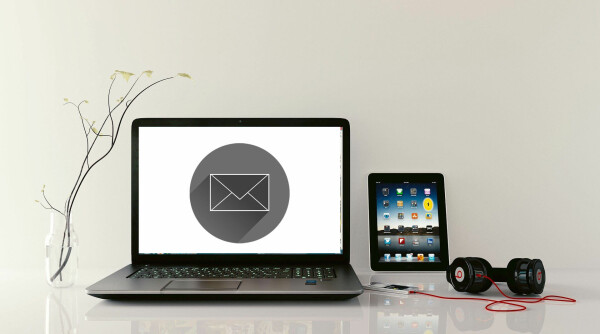In all likelihood, the COVID-19 pandemic will be, for most of us, the most disruptive event we’ll have lived through. With so many of us now working from home, it has changed the very way we work.
In our field, it is relatively easy to get used to working from home, at least as far as the technical part is concerned. It is, however, a radical change in people’s way of working, so, here at Chakray, we’d like to share our experience with you. We’d like to share with you the good practices and tips that we’ve identified.
-
Create a Comfortable and Appropriate Work Environment
First of all, we must prepare our home office. Ideally, we can make use of a room which we can devote to working from home. Nevertheless, this may very well be impossible for many.
It is well worth making use of a large desk, which must be kept clear of elements which may distract us, or affect our concentration by provoking a visual overload.
Music may be a great ally at your home office. It helps you shut out external noise, and can encourage a relaxed or work-motivated mood, depending on personal tastes. Enjoy the little moments to relax, as such to make the most of the time at the computer, and avoid distractions.

-
Tools and Devices Necessary for Working from Home
It is important to meet a number of requirements in order to successfully work from home. A proper Internet connection and a good router is crucial to avoid problems, as well as keeping in touch with the colleagues, which we will delve into later on. Moreover, a webcam will be required, if you’re not using a laptop with one built in, and an separate monitor makes things a lot more comfortable.
Even though it is not essential, storing shared group information on a cloud service is highly useful. Examples of this shared information could be:
- Project documentation, procedures, good practices
- Code repositories
- CI/CD Tools (Continuous Integration and Continuous Delivery)
- Task management
- ERP for economic monitoring of projects
- Messaging, chats, and videoconferences.
Depending on the projects and the client’s preferences, here at Chakray we may use both cloud-based tools or services available at client’s facilities, or Chakray on-premises services. A VPN is used to get a secure access.
Regarding specific tools, these vary depending on the project. We can use Confluence, Google Docs, GitLab, Bitbucket, Jenkins, GitLab-CI, Jira, Odoo, Google Hangouts, Google Meet, or Mattermost, among others.
In respect to our laptops, we frequently use virtual machines, so we can guarantee that all developers are working in a homogeneous and easy-to-update environment. To this effect, we use virtualization tools such as VirtualBox.
An element which perhaps may not considered so important, but that can make communication easier, is a microphone and quality speakers. These devices may affect sound quality considerably during the meetings and videoconferences. Ideally, make use of good-quality headphones with attached background-noise-reducing microphone. If you do, everyone can hear you better, and this makes a real change to communication.
-
Keep in Touch with Colleagues, Don’t Shut Yourself Off
Once you start working from home, it is all too common to feel isolated from the rest of the world, which provokes a feeling of loneliness. This is something you must avoid, since communication is crucial in doing your job properly. For this reason, we always recommend staying in touch with your colleagues, over the phone or through video calls.
At Chakray, we keep track of our activity using Scrum. As such, we are well used to carrying out brief daily stand-ups to keep everyone up to speed on how the projects are coming along, be coordinated, or raise any relevant flags. This practice has been easily shifted across to the home office.
However, we’ve lost that vital moment to have a coffee with our workmates every morning, as well as that time to chat about external problems. In order to keep up this kind of contact, we’ve agreed to start our daily stand-up fifteen minutes earlier. This gives us a moment to talk about non-work related issues, and to maintain a feeling of connection with other people. Though it might be inevitable for the current situation to crop up in conversation, we’ve found that sharing concerns helps to endure them. Moreover, we add a touch of humour whenever possible, which helps to maintain morale in difficult moments.
Then, whenever we need to talk about an issue with another colleague, we much prefer to jump on a video call. It makes contact more personal, even though it’s just a chat most of the time.
Likewise, in this time of confinement, we recommend keeping in touch with other people, such as family and friends, outside of working hours. There are people suffering from anxiety due to this moment of uncertainty, fear, and economic difficulties. Sharing these feelings with a friend may help both you and them not to feel alone. We have noticed that we are all resorting to video calls beyond phone call or messages, in order to keep better and closer contact with the people we care about.

-
Stay Focused, Avoid Distractions
It is important to stay focused on your work in order to be productive. Many people experience more distractions while working from home, while others may get more distracted while working at the office.
You’re likely to be sharing space with your family during the quarantine. That is why it is recommended to have an independent space where staying focused is easier. This is especially true for parents and guardians, whose children may not understand that they have to respect that space, or behave in a way that does not force adults to leave their workstation and tell them off.
On the other hand, the difficult balance between an environment encouraging concentration and total isolation is very important. We think that it is positive to have as much interaction as possible with other colleagues for work-related and external matters, taking care to maintain a balance.
You may well be tempted to keep in contact using social networks, just like at the office. During this time of confinement, external interaction can help us stay in a good mood and maintain our mental health. The key is to find balance, so it does not turn into an excessive source of distraction.
It is by no means advisable to stay seated at your workplace for 8 hours straight, without moving, neither at the office nor while working from home. You must take regular short breaks. You can, for example, go to the kitchen for a drink of water, have a snack, go to the balcony and spend a couple of minutes looking outside (and getting some fresh air), or just take a short stroll around the house.
One useful tip we have for you, not just for this special situation, is to use simple techniques such as the Pomodoro Technique. This kind of technique helps improve concentration by planning intense working periods with brief pauses.
-
Maintain Discipline, Establish a Schedule, Dress for Work
Working from home allows us to make flexible use of our time. This is true not only in terms of work, but also for household tasks. This is, however, a double-edged sword.
On the positive side, we can do anything at any time we want or need to do it, so, there is complete flexibility. On the other hand, there can be disadvantages. One example is not being able to find a balance. You may find you’re having trouble switching off from work or overworking, or you may find that, on the contrary, you’re focusing on other issues which prevent you from completing your work on time. Either case can be detrimental, so avoid reaching these extremes.
One way to avoid imbalance is following a similar schedule to the one you had when going to the office, and committing yourself to following it. This way, you’ll will achieve good separation between your work and household tasks.
Achieving this, you’re likely to feel more satisfied for having completed your daily work, and you’ll have more free time to take care of other things outside of office hours. If this separation is blurred, you may find you blame yourself for working too much, or for spending too much time on your own matters. And, of course, have a shower, get dressed, and even wear perfume if you like. These tips will help you get used to the situation and will help you distinguish your working day from the rest of the day.
-
Manage Your Energy, Stay Motivated
This is a general tip that can be applied both to working at the office or from home. Everyone goes through different moods throughout the day: There are moments when you may feel more active and more awake, and there are others when you may feel more tired or clumsy.
This usually happens in cycles related to the different hours of the day. There are people who are more active at the beginning of the day, and others who feel more active as the day goes on.
Our recommendation is to learn to recognise how those cycles work for you, the amount of energy you have in each moment, and, according to that, plan your activities as much as possible according to your cycle.
The moment when you feel more active and awake is perfect for carrying out complex tasks that require greater concentration, and difficult issues that can be a stimulating challenge.
On the contrary, when you feel tired or a bit sleepy, it’s not the ideal moment to do those complex or challenging tasks. This moment may occur at the beginning of the day for some, after lunch, or in the evening for others. It can be a good time to deal with less challenging tasks which may require less concentration, such us writing certain types of reports, drafting documents, etc.
-
Get Tasks Finished
This is also a general suggestion, but it can be even more important at these times of the obligatory home office. To a greater or lesser extent, we all need our work to be recognised by ourselves and by others.
When working from home, this can be a bit more difficult because, at a distance, only completed tasks are visible to others.
In cases where there is a tendency towards dispersion, you’re likely to find yourself taking on several tasks at once. In cases where there is a tendency towards procrastination (putting off difficult or unpleasant tasks), it’s all too easy to find relief in postponing a difficult task which you don’t know how to deal with, and just starting another one. After all, we are still working, right?
The emotional effect of finishing something is very important, especially when it has been a very difficult task. There is no doubt that it produces satisfaction and it takes off a heavy burden. At the same time, it provides energy to get on with the next task.
When multitasking, however, there’s a greater probability of jumping from one to another when feeling stuck. This is a way of being extremely active, but never finishing anything. This dispersion drains energy, as all those pending tasks don’t just go away and the thoughts of them are likely to stick around.
On the other hand, if you focus on finishing tasks, you put all our energy into doing so, and you avoid jumping from one context to another. This way you will achieve the satisfaction of finishing tasks more often.







